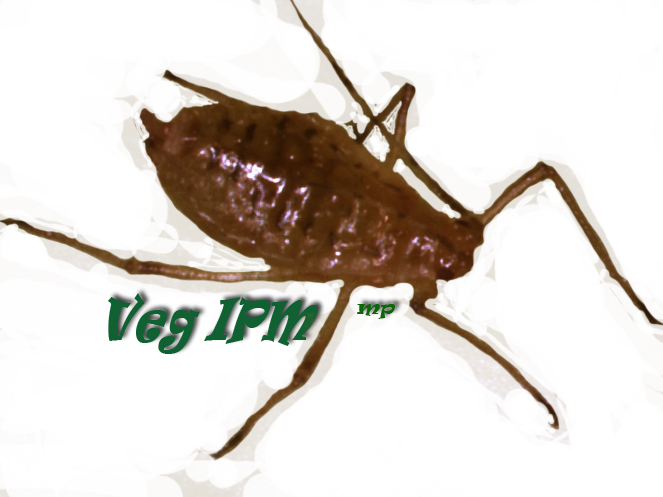
|
|
|
|

|
|||
|
|
|||
With the changing weather patterns (wind actively blowing out of the north and west),
PCAs can anticipate an increase in winged (alate) aphids showing up on desert produce
crops. Based on my observations over the past two decades, this is an annual occurrence
with our key aphid pests on produce. Aphids that typically infest leafy vegetables
do not over-summer in the desert. Rather, winged adults migrate into our cropping
system from mountainous regions of California via wind currents during November/December.
Once the aphids reach our desert valleys, they typically move from crop to crop
until they find a suitable host to feed and colonize on. But don’t panic just because
you suddenly find a few winged aphids on the plant. It is not uncommon to find winged
aphids on lettuce or broccoli that do not colonize on the crop. An example of these
would be cabbage aphid which will colonize and infest cole crops but not lettuce,
spinach or celery. Other examples would include aphids that colonize small grains
(i.e., corn leaf aphid) or alfalfa (i.e., blue alfalfa aphid). Because these aphid
species will not colonize produce crops, it is important to be able to distinguish
them from the aphids that do colonize and require management to prevent problems
at harvest (i.e., green peach aphid, foxglove aphid, lettuce aphid, cabbage aphid).
Proper aphid ID can also influence your choice of insecticide, but more on that
in a later update. As mentioned in the last update, PCAs have been finding small
colonies of cowpea aphids showing up on frame leaves in lettuce. That is a common
occurrence every fall. Not to worry, experience has shown us that although small
cowpea aphid colonies may be found on lettuce, the populations generally stay low
on the plant on the frame leaves and rarely increase to levels causing contamination
issues. But you never know. So keep an eye for these guys, as our El Nino weather
this year may be more conducive to their development than normal. Local research
has shown that aphids tend to be more abundant at harvest in lettuce in years with
higher winter rainfall than average (see
Impact of Lettuce Planting Date on Aphid Contamination). Also, don’t forget
that proper aphid identification is important; it can save a PCA time and money,
and prevent unnecessary insecticide applications. If you find an unusual aphid in
your produce, don’t hesitate to drop it by the Ag Center and we’ll get it identified
for you. But if you want to be fast and accurate you might use the attached publication
Aphid Identification in Desert Produce
Crops that may assist you in identifying winged and wingless (apterous)
aphids important in leafy vegetables and cole crops.

Remember, When in Doubt . . . . . “SCOUT”
Click picture to listen to John’s update
To contact John Palumbo go to: jpalumbo@ag.arizona.edu
|
|||
| Back | |||
|
For questions or comments on any of the topics please contact Marco Pena at the Yuma Agricultural Center.
|
|||
|
Home |
Cotton | Veggies |
Forages | Grains
| Citrus |
Crop x Crop Insects | Diseases| Weeds | Pesticides | Economics | News | Weather | Research | Photos | Contacts | General Info. Copyright © 2001 University of Arizona, College of Agriculture and Life Sciences Webmaster: Al Fournier (acis@ag.arizona.edu) |
|||
